This month on the blog we are embracing the new; we are encouraging you to try something new in your crafty realm! In her last post, Alison explores alcohol inks. If you’ve been curious about those, go check out her post for some trips and tricks, trial and error. I’ve got mixed media for you as well, only with watercolor paint and some different textural techniques.
Today we are going to practice watercolor textures using salt and alcohol to alter the paint’s behavior! Did you know this was possible? I learned this a few years ago but have only tried it a couple of times. This time I set out to really try and understand the parameters needed to get the end results I wanted. I learned some really unexpected things along the way. Let me walk you through my process of experimentation.
Trying something new can be an intimidating experience. This is especially true if you were inspired to try something based on a spectacular finished product you saw on some social media site. I want you to take a deep breath and repeat after me. “What I make as a beginner will be imperfect. Practice makes progress.” In fact I am going to embrace the idea of practice versus the idea of making final creations. My full practice session is available on YouTube or keep reading for the list version.
- Start with just 2 or 3 ideas of things to try. Attempting to tackle everything—mastering watercolor in once sitting for example—is just impractical. Here are my items to play with.
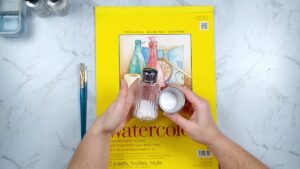
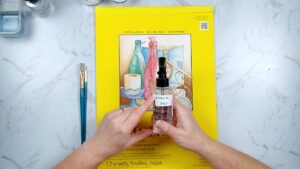
- Have a large canvas for lots of room to play.
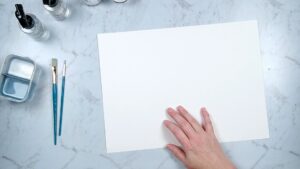
- Break that space down into much smaller spaces so you can experiment in lots of different ways. I use pencil with watercolor because I know it won’t bleed. I simply draw rough squares in a row. You’ll see later that some trials need more room.
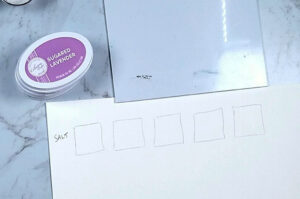
- Be scientific about it. Yes this is art but it is also a learning process. If you change 5 different things about your materials and techniques, you can’t possibly know which one was the change that gave you the result you like. Change just one thing and test it out. Change one more thing and test it out again. Here are three different wetness levels with kosher salt sprinkled onto the wet paint.
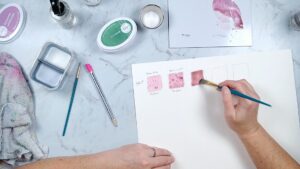
- Don’t be afraid of things not working. That is perfect learning! You have now narrowed down what to do next time for the results that make you happy. Here is where I made a mistake but didn’t know what I had done—yet!
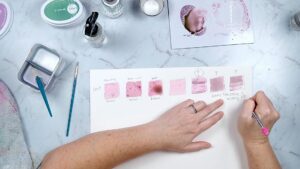
- As you are working take notes. I scribble notes onto spaces of my canvas about my process, particularly what materials I used, how wet things were, and if I liked the result or not. I try to note what worked and what didn’t. This shows me figuring out my previous mistake and then using that property on purpose as an experiment.
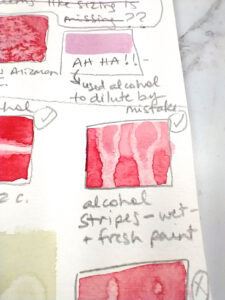
- Takes notes. Yes I said that already, but in this case I’m telling you to takes notes of NEW things to try next. Sometimes you’ll get to those new things in this crafty session, but often they will have to wait. If you have notes then it is an easy way to just jump right in next time.
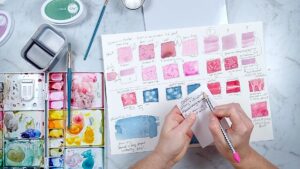
Now that you’ve experimented, process your experience. What did you figure out about your materials or yourself? What ares need further study? What techniques do you want to try next time? What end result project would you like to strive for? In no particular order this is what I learned.
- I figured out that I am pretty timid with color. I had to force myself to keep picking up more and more pigment so that my colors would be true and deep.
- I figured out that it is easy for me to grab the wrong material so I had to be more proactive in keeping things organized on my desk.
- I realized that alcohol behaves really differently on the paper than water.
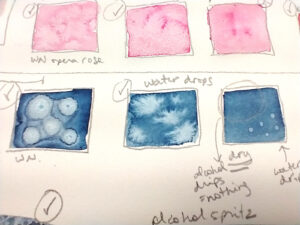
- The kosher salt technique reminded me of stars…
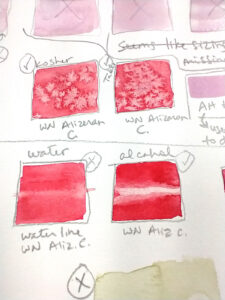
…which lead me to the idea of galaxy paintings.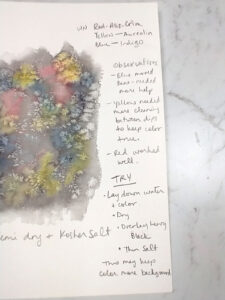
Try next time: paint the colors first, then the black for a more subtle galaxy. Try different wet and dry layers to see which looks best. - Where could these techniques come in handy? Kosher salt could be used for stormy clouds or seas, as well as abstract interest.
- Could the alcohol be used to stop paint from bleeding together if I accidentally touch wet areas? Is this a possible correction tool?!
- The alcohol streaks on the paper were the most fascinating but also perhaps the most finicky. Play with these more.

- I forgot to do a side-by side of wet wash with alcohol spritz vs. water spritz. Try that next time.
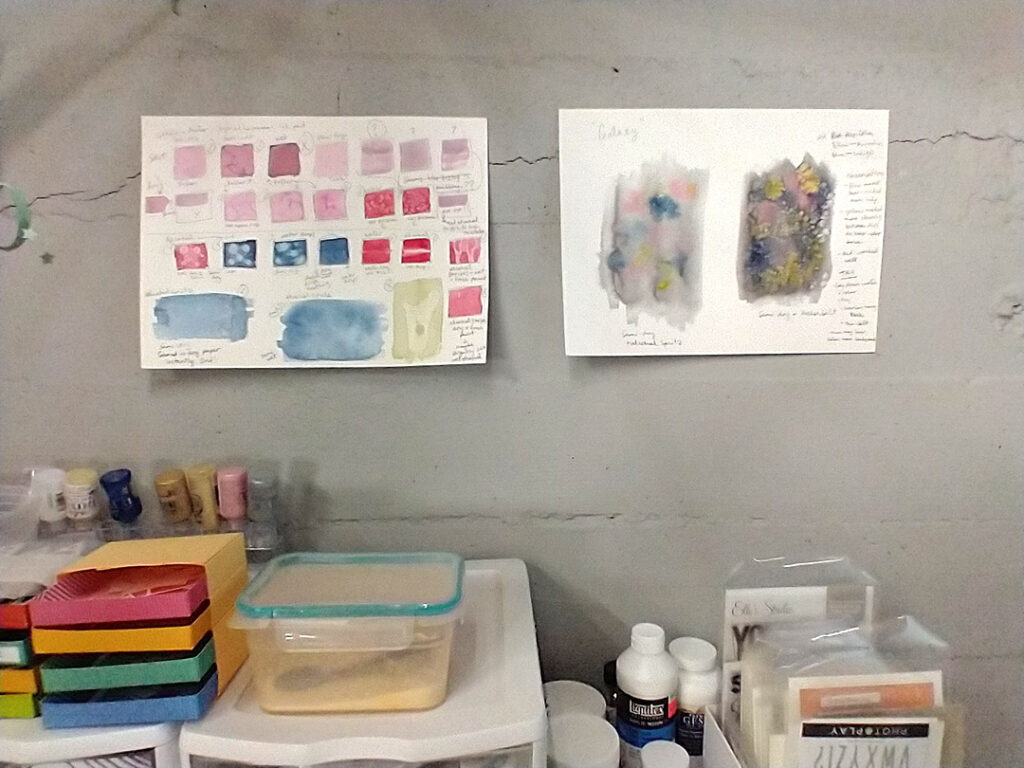
Now put these pieces somewhere you can view them for a while. This will give your brain more time to re-experience the process without having to have a full paint session. This form of repetition does help the the brain solidify the information. Then when you are done with them on display, save them somewhere safe for future reference.
